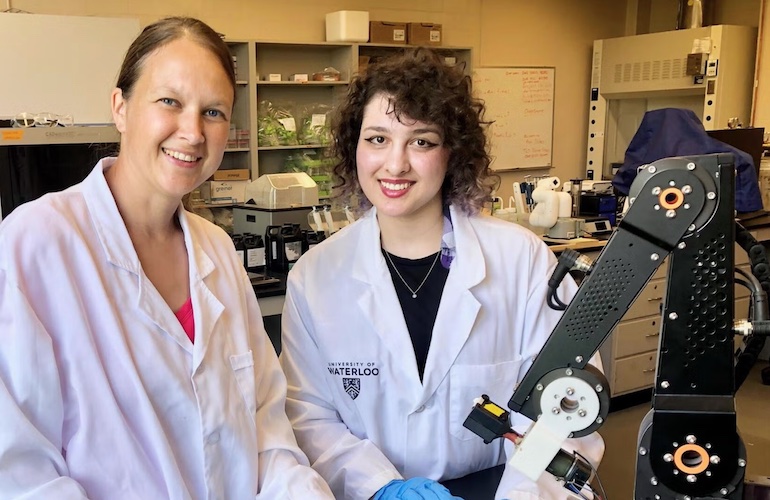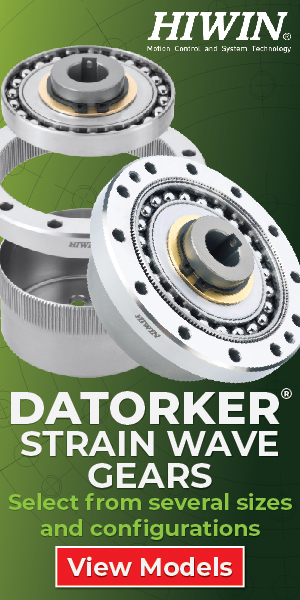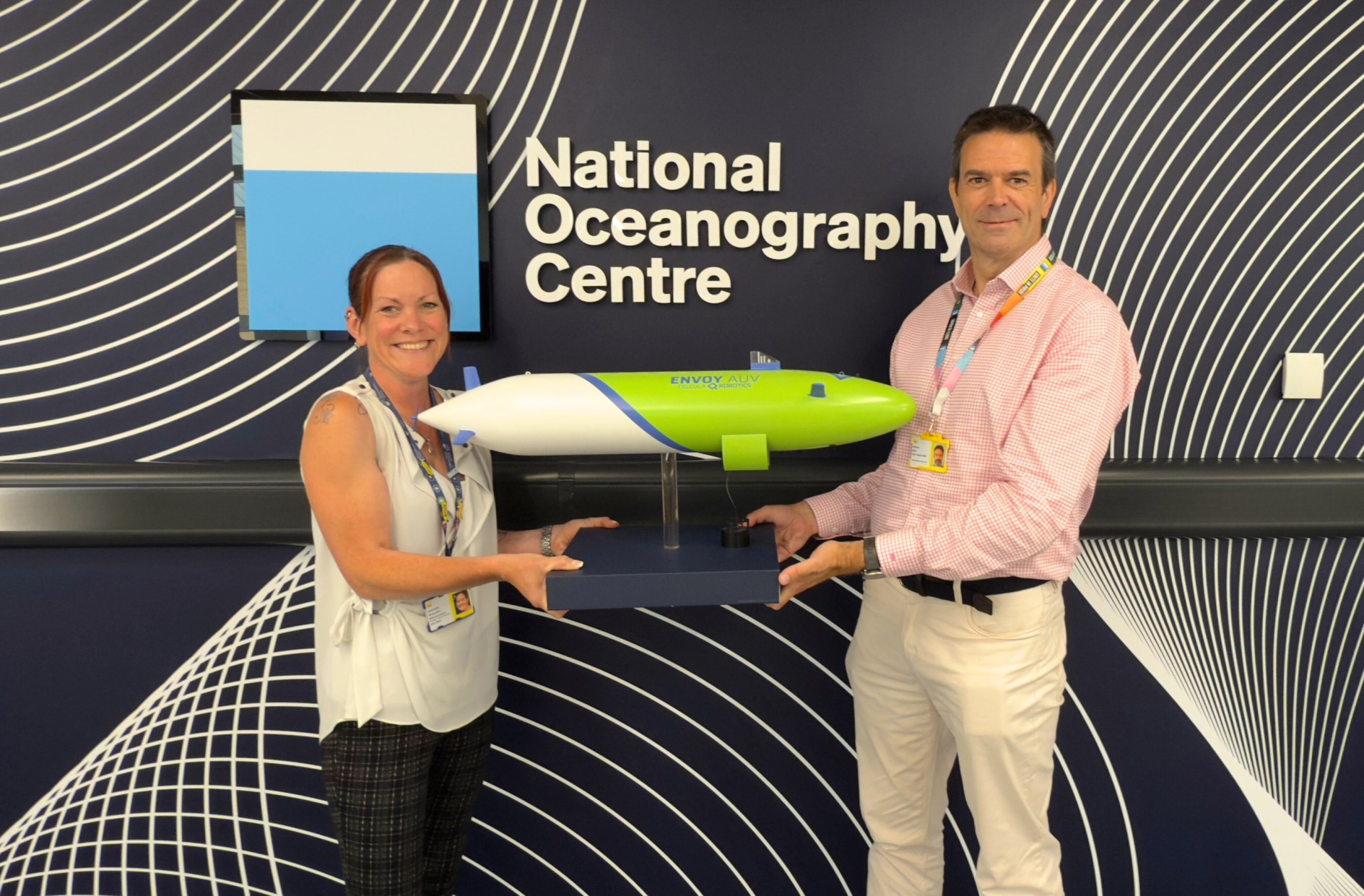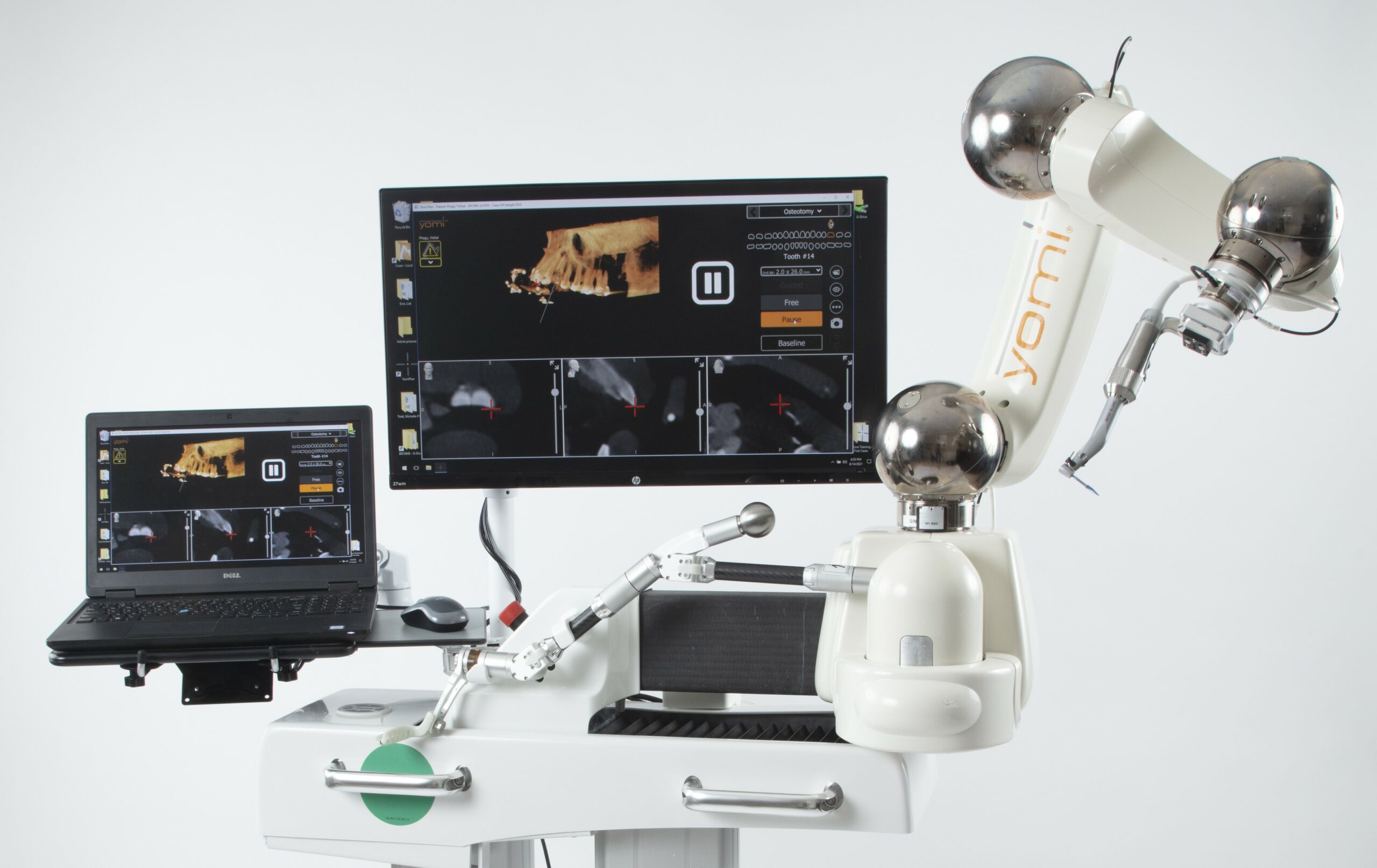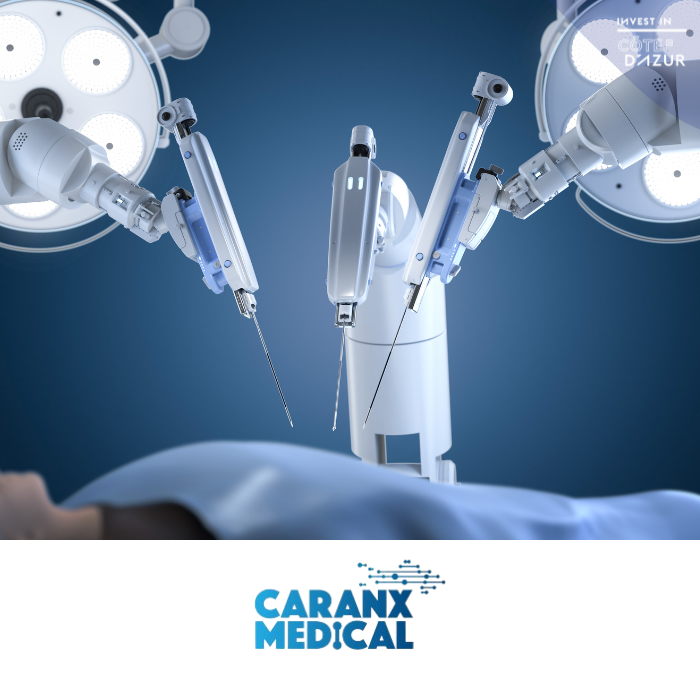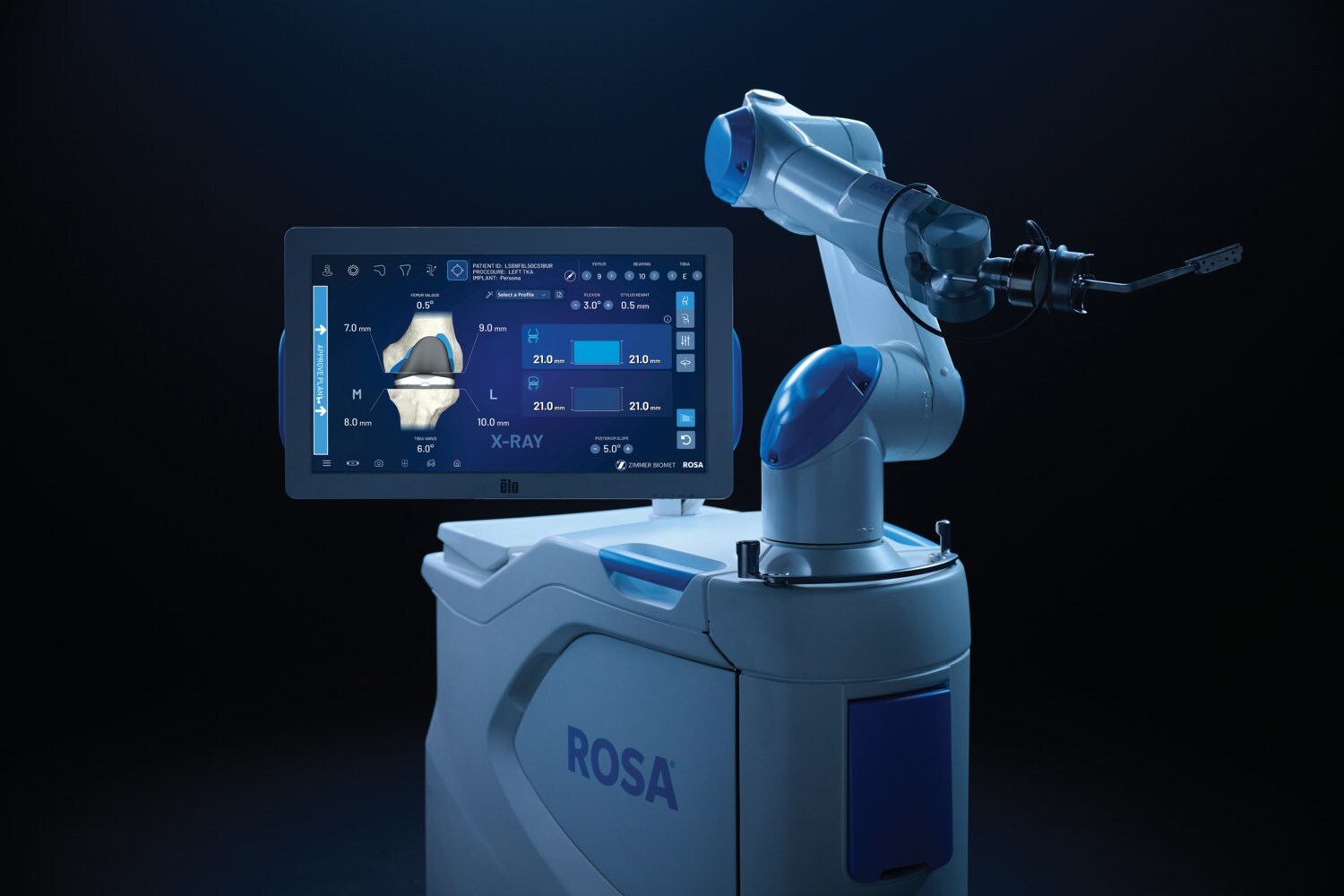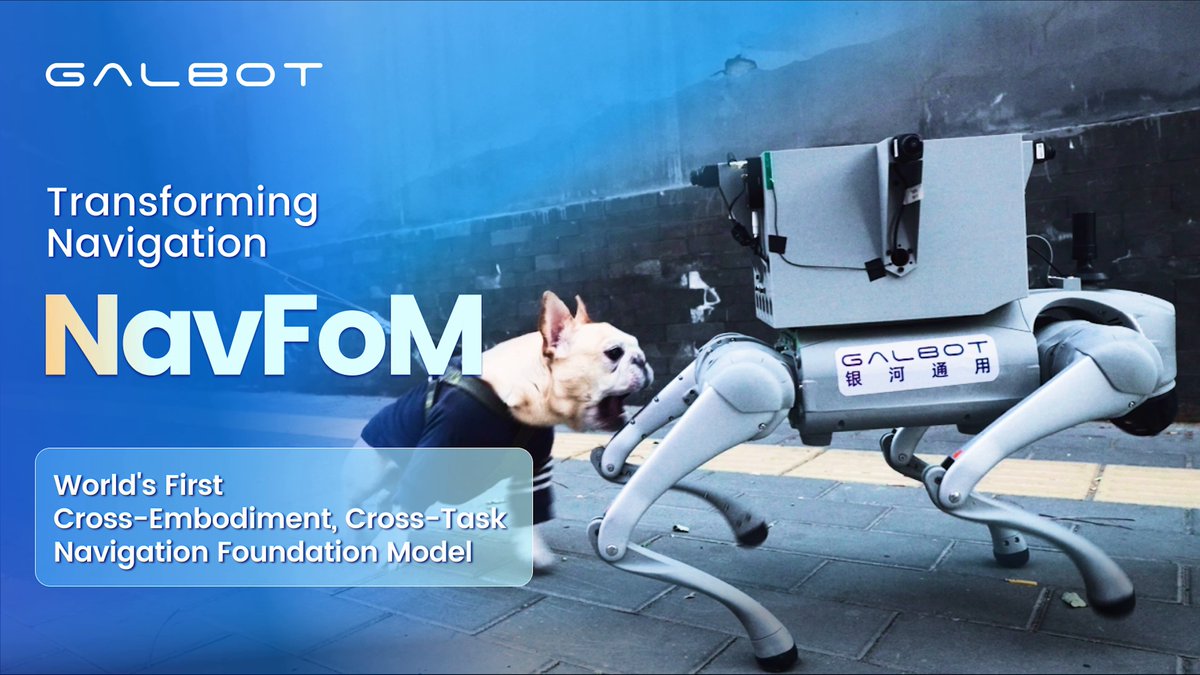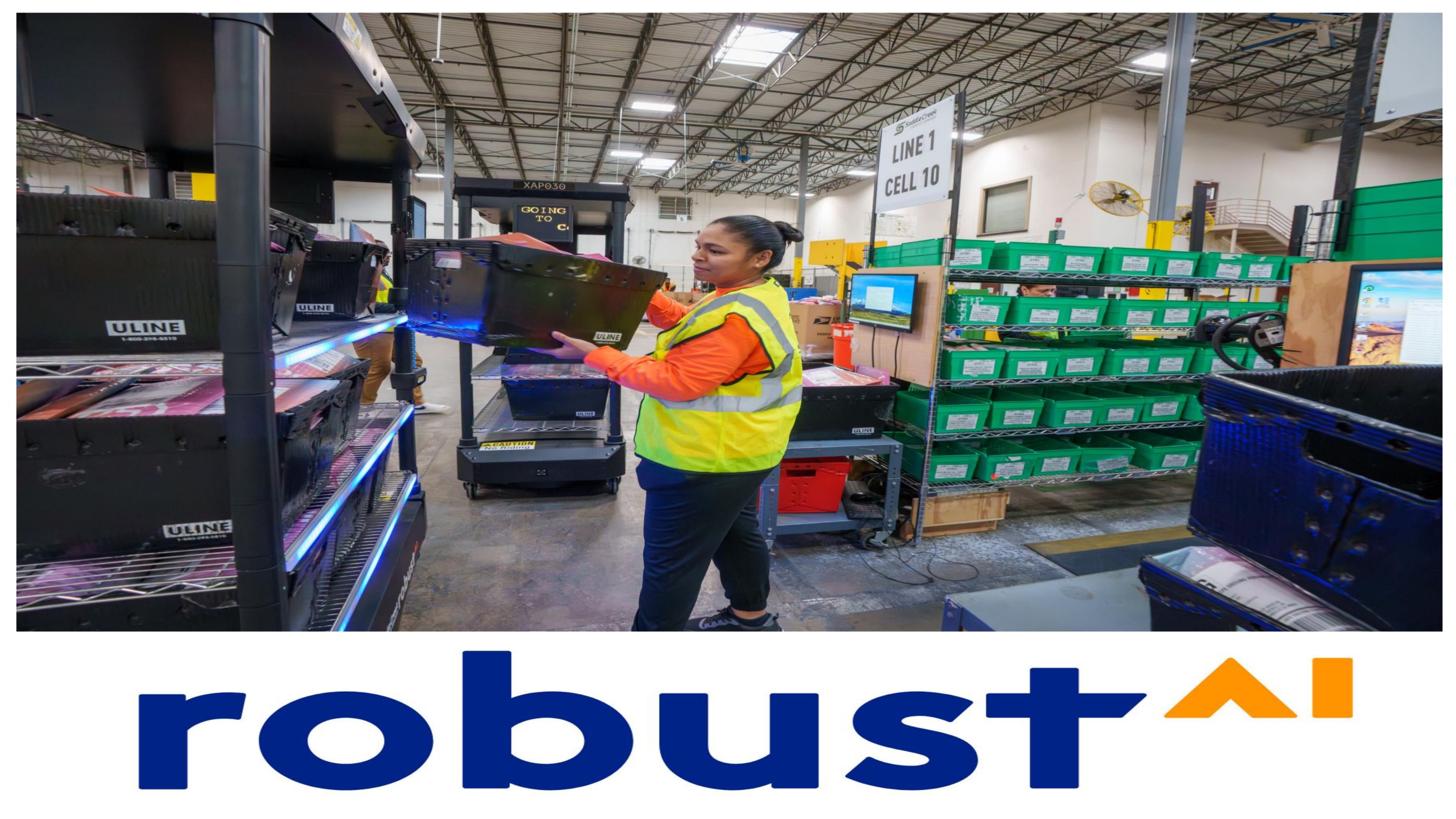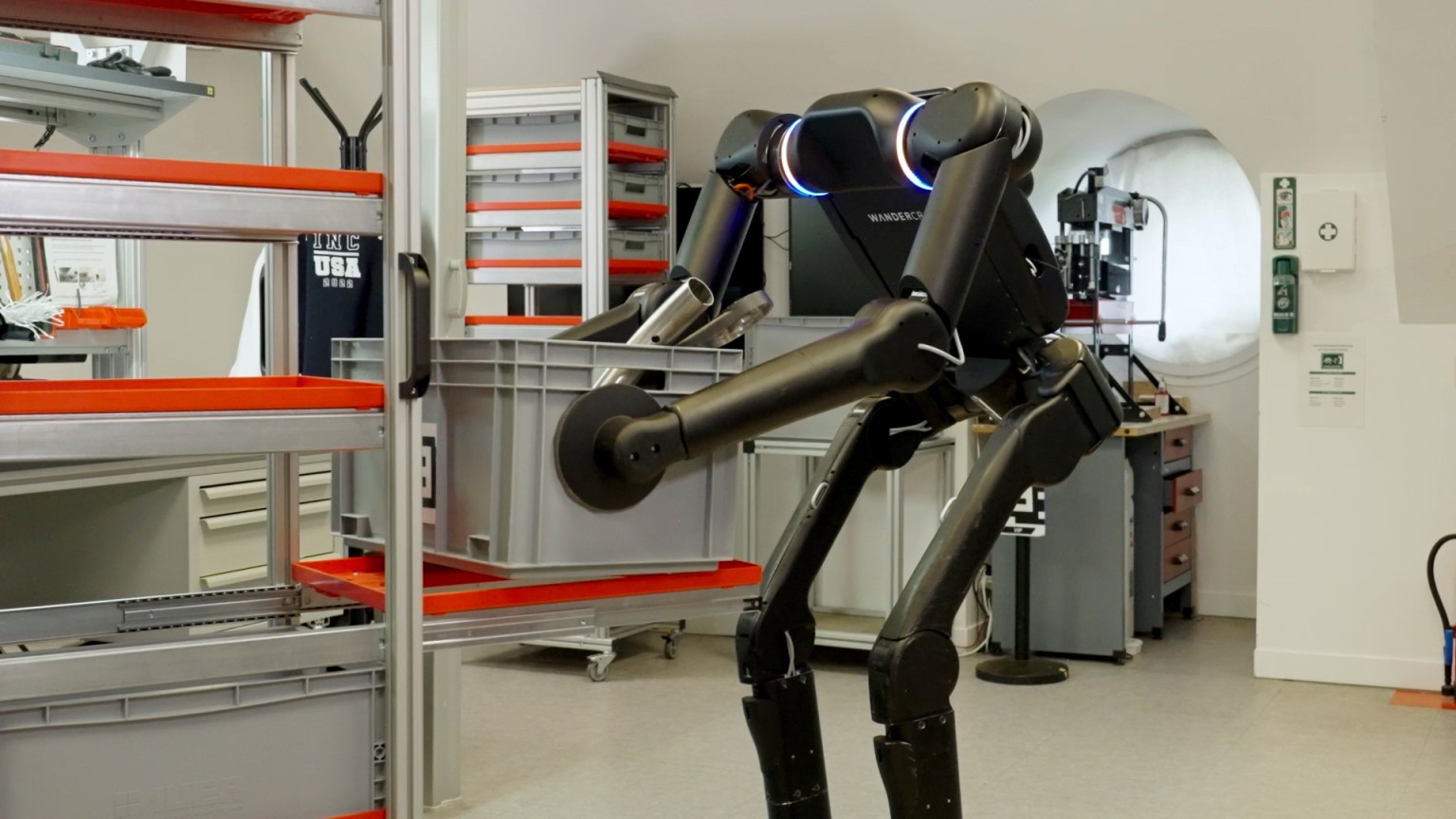University of Waterloo-Led Team Develops Tiny Magnetic Robots to Dissolve Painful Kidney Stones
Tested in a life-size 3D urinary tract model, the soft robotic strips use enzyme-powered chemistry and precise robotic guidance to accelerate stone dissolution — offering a minimally invasive alternative to slow medications and invasive surgeries.
Image Courtesy: Public Domain : Dr. Veronika Magdanz (left) and researcher Afarin Khabbazian use a robotic arm, miniature robots and 3D-printed models of the human urinary tract to develop new technology to dissolve kidney stones. (University of Waterloo)
An international research team led by the University of Waterloo is developing technology to dissolve painful kidney stones in the urinary tract using tiny robots.
The new technique, tested in a life-size, 3D-printed model, features thin, spaghetti-like strips fitted with magnets that can be moved into place near uric acid kidney stones with a robotic arm operated by doctors.
The soft, flexible robot strips are about a centimetre long and contain an enzyme called urease. Once in place, the urease reduces the acidity of the surrounding urine, thereby dissolving stones until they are small enough to pass naturally in just a few days.
“There is currently no good treatment method available for this type of kidney stone,” said Dr. Veronika Magdanz, a professor of systems design engineering at Waterloo who consulted urologists in Spain and Canada during the research project.
“Patients are typically prescribed painkillers and oral dissolving medication that provides slow relief over the course of weeks or months. And in urgent cases, when stones block the urine flow, they must be surgically removed.”
Kidney stones, which are solid deposits that form inside the urinary tract like small rocks, affect roughly 12 per cent of people and frequently recur, resulting in prolonged drug treatment and repeated surgeries that increase patient suffering and tax healthcare systems.
Magdanz said researchers are optimistic their minimally invasive treatment system will be particularly beneficial for people known as recurring stone formers who don’t tolerate oral medication well or can’t undergo surgery due to risk factors such as chronic infections.
“Our goal is to provide an effective alternative to existing treatment methods,” said Magdanz, who is also director of the Medical Microrobotics Lab at Waterloo. “We hope accelerated stone dissolution will relieve the pain faster and help patients pass stones quicker.”
Next steps in the development process include studies with large animals and refinement of the control system, which includes a motorized magnet on a robotic arm, and real-time ultrasound imaging that enables doctors to precisely manipulate robots into place near stones.
The research team at Waterloo also included Dr. Alfred Yu, a professor of electrical and computer engineering, and Dr. Mir Behrad Khamesee, a professor of mechanical and mechatronics engineering.
Their international collaborators included researchers and doctors at universities and hospitals in Spain and Germany.
A paper on the work, Kidney Stone Dissolution By Tetherless, Enzyme-Loaded, Soft Magnetic Miniature Robots, recently appeared in Advanced Healthcare Materials.


